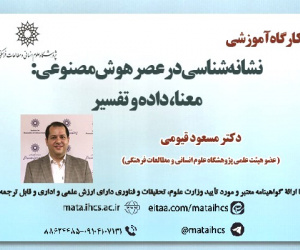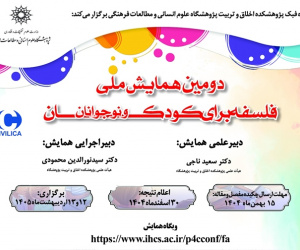تحلیل مفصل بندی معماری مساجد قدیمی در فضای گفتمانی هنر اسلامی بر اساس نظریۀ تحلیل گفتمان ارنستو لاکلا و شنتال موف (مقاله علمی وزارت علوم)
درجه علمی: نشریه علمی (وزارت علوم)
آرشیو
چکیده
بیان مسئله: این پزوهش با طرح مسئله مفصل بندی معماری مساجد قدیمی در فضای گفتمانی هنر اسلامی نوشته شده است. در فضای گفتمانی هنر اسلامی، معماری یکی از نظام های نشانه ای محوری است که از ابعاد مختلف نقش نشانه ای اجتماعی، فرهنگی و سیاسی را ایفا می کند. اما هنگامی که بحث معماری اسلامی، معماری سنتی، ایرانی و... مطرح می شود این نظام نشانه ای واجد ویژگی های گفتمانی می شود. پس معماری اسلامی در قالب بناهای مذهبی که کارکردهای اجتماعی - دینی هم دارد، مجدداً به واسطه نشانه ها و در فرایند رقابت بین گفتمانی مفصل بندی می شود.هدف پژوهش: هدف این پژوهش تبیین سازوکارهای مفصل بندی معماری اسلامی در فضای گفتمانی هنر اسلامی است که نقش ها و کارکردهای گفتمانی معماری مساجد قدیم را روشن می سازد. روش پژوهش: این پژوهش از نوع تحقیقات کیفی است و با روش تحلیل گفتمان نوشته شده است و در صدد پاسخ به این پرسش است که آیا رابطه ای بین ساختار و مفصل بندی معماری مساجد قدیم با گفتمان قدرت و دین وجود دارد؟ نتیجه گیری: یافته ها و نتایج اصلی پژوهش نشان می دهد در فضای گفتمانی هنر اسلامی، معماری پیوسته در بستر تغییرات ساختار اجتماعی و فرهنگی ناشی از گفتمان قدرت، دچار دگرگونی های متعددی بوده است چنانکه تغییر کارکردهای اجتماعی مساجد امروز در قیاس با ساختار معماری مساجد دوره های قدیم، متحول شده اند.Analysis of the Articulation of Old Mosque Architecture within the Discursive Space of Islamic Art Based on the Discourse Analysis Theory of Ernesto Laclau and Chantal Mouffe
Problem satement: This study addresses the articulation of old mosque architecture within the discursive space of Islamic art. In the discursive space of Islamic art, architecture functions as a central semiotic system that plays social, cultural, and political semiotic roles from various dimensions. However, when Islamic, traditional, or Iranian architecture is discussed, this semiotic system takes on discursive characteristics. Thus, Islamic architecture, particularly in the form of religious buildings with both social and religious functions, is rearticulated through signs and within the process of inter-discursive competition.Research objective: This study aims to explain the mechanisms of articulation in Islamic architecture within the discursive space of Islamic art, shedding light on the discursive roles and functions of old mosque architecture.Research method: This study is a qualitative study conducted using discourse analysis, seeking to answer the question: Is there a relationship between the structure and articulation of old mosque architecture and the discourse of power and religion?Conclusion: The main findings indicate that within the discursive space of Islamic art, architecture has undergone numerous transformations in the context of socio-cultural structural changes driven by the discourse of power. The evolving social functions of mosques today, compared to the architectural structures of mosques in earlier periods, reflect this transformation.








